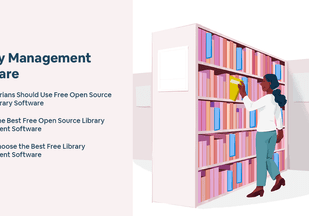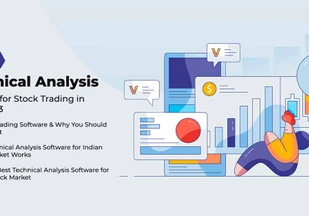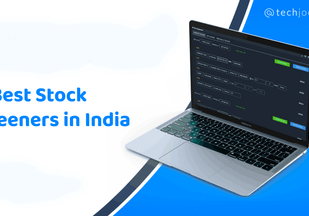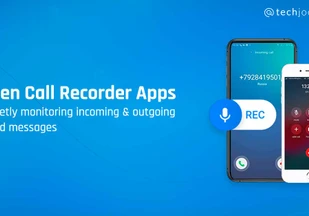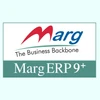Accounting is the soul of any successful business, whether a one-person company or Google. An accurate and well-managed accounting operation could be the difference between the success and downfall of a company. Accounting helps businesses keep track of payables, receivables, inventory, and so on, helping business owners make informed decisions.
If you are finding the tasks of GST invoicing and filing cumbersome, it’s time when you should think about automate the process of financial management. We will answer you in detail on how to manage accounts for small business.
Accounting is a costly business process requiring expertise, which is not affordable for small businesses. However, you can manage your business accounts without spending huge resources with the help of right accounting tools and guidance.
Table of Contents
What is a Small Business Exactly?
Small business is a relative concept; some businesses are small by area, some by people, and some by operation. To be very clear about the statement, you can consider a few parameters as a small business.
These parameters are not set by law or rulebook but only for better understanding. If your business fits into any of the following parameters, you can consider your business as a small business.
By employee Number:
- Less than 20 Employees for Service Sector
- Less than 40 Employees for Trade Sector
By Workplace:
- Having less than three outlets
By Operations:
- Having less than 200 purchase orders per month for the trade sector
- Less than 100 invoices per month for service Sector
By Sales:
- Annual Turnover less than 5 Crore for trade sector. Average daily sales less than 1.5 Lakh (approx.)
- Annual Turnover less than 2 Crore for service sector.
By Type:
- Retail stores, Food outlets, hardware stores, Electronics shops, Book stores, etc.
- Small service provides: Repair Services, Renting, Servicing, etc.
- Professional, Doctors, Consultants, CA, Translators, etc.
What Is Small Business Accounting?
Small business accounting is a process to record, track and maintain financial records. Accounting for small business emphasizes on invoicing, bank statement tracking, vendor & debt ledger management, and expense tracking.
If you maintain a diary, cashbook, or excel sheet to track the expenses, sales, or payments. In that case, you are in the initial phase of accounting, i.e., bookkeeping. But here, we are not talking about recording transactions but keeping track of all these transactions in a smarter way for your business.
Priorities of SMB Accounting
The priorities of accounting for small business owners are very different from the accounting system of large businesses. Here are the significant solutions offered by the SMB accounting software.
- Invoicing
- Expense Tracking
- Purchase Record
- Sales Record
- Accurate Creditor Ledger
- Accurate Debtors Ledger
- Bank Statement Reconciliation
- GST and Income Tax Return
- Balance Sheet, Profit, and Loss, Cash Flow Statement preparation
Basic Accounting Terminologies That Keep You Thinking


Here, we list down a few essential and basic financial terminology that every small business owner should know.
Revenue/ Sales / Income: Income from the business is revenue, which you can term as sales. Sales could either be in cash or credit.
Creditors/ Payables: Creditors are the people to whom you owe money. These could be suppliers, banks, employees, or any other person or company.
Debtors/ Receivables: Debtors are the people to whom you have sold something on credit, and they still owe you money.
Ledger: A ledger is a record of all the transactions related to a particular person, entity, or type. A ledger provides consolidated records of all related transactions and due balances. Supplier ledger, debtor ledger are the most common examples.
Budget: A budget is an estimation of revenue and expenses drafted for a specific period or financial operation. Budgets are based on past analysis and forecasts.
Bank Statement: Bank statement is a report that contains all your bank account transactions.
Asset: An asset is anything that has value, whether physical or non-physical. Land, Building, furniture, computers, etc.
Liability: A liability is a debt or an obligation that a business owes. For example, rent payable for the month, interest payable.
Financial Year: The period between 1st April of the starting year and 31st March of the succeeding year.
GST: GST (Goods and Service Tax) is an indirect tax you must charge to your customers in India. It’s levied on the sale of goods or services. GST rate in India is 5%, 12%, 18%, or 28%, depending on the type of goods or service.
Financial Statement: Financial statement is a report that provides all the information about your business and its activities. Balance Sheet, P/L Statement, and cash flow statement are major examples of financial statements.
Financial Statements for a Small Business
Financial statements are consolidated and summarized reports representing all the business transactions in different financial periods. They give an overall picture of accounting activities, performance, and financial health. Here are the most important financial statements for small business:
Balance Sheet: This is one of the most important financial reports for any business. Balance sheet for small business represents the financial standing of your assets, liabilities, and equity at the end of the financial year.
P/L Statement: Profit and loss statement for small business shows income and expenses for a particular financial year. It helps you see whether your business is making a profit or loss and the reason behind it.
Cash Flow Statement: The cash flow statement gives a complete picture of your business inflow, rotation, and outflow of cash.
Accounting Reports for Small Businesses
Reports are the summarized data related to any specific financial transaction of business. Some of the accounting reports for small businesses are:
Sales Reports: This report tells you how much revenue your business has generated from sales. It can be further segregated in terms of products, customers, or other factors.
Purchase Report: This report shows purchases made by your business over a particular time. It can be segregated on the basis of different types of purchases, suppliers, or other factors.
GST Reports: GST Return reports, also known as GSTR reports, provide helpful information about GST you have paid or collected, and the exact GST payable for the month.
Expense Reports: An expense report helps track your business expenses. It gives you the list of expenses for a particular period so that you can track, monitor, and analyze them.
How to Do Accounting for Small Business: Cash vs. Accrual Accounting


If you haven’t studied accounting in your college, you might wonder what are cash and accrual accounting methods. Let’s explain both these bookkeeping services for small business in layman terms.
What is Cash Accounting?
Cash Accounting refers to recording a transaction is recorded only when consideration is exchanged. For example, if you own a book shop, you sell books and immediately receive cash from customers.
You can quickly enter the transaction in your accounting software or books when the sale is completed. Whenever you order books from a supplier, you record the purchase transaction only when you pay the supplier by cash, cheque or wire transfer.
What is Accrual Accounting?
The accrual accounting system involves transactions that are recorded and due. This accounting method has nothing to do with payment and receipt. The accrual method depends on the accrual of events instead of an exchange of considerations.
Suggested Read: Difference Between Cash Basis Vs Accrual Basis of Accounting: Which is Better for SMBs?
Difference Between Cash and Accrual Accounting Method
| Factors | Cash Accounting System | Accrual Accounting System |
| Recording Event | Exchange of cash, payment, or consideration | On the due basis, as soon as the transaction is executed |
| Complexity | Extremely Simple | Requires Basic Understanding |
| Accuracy | Doesn’t give accurate statements and reports | Gives Accurate reports and financial statements |
| Acceptability | Generally, not accepted as the standard accounting system | Widely accepted accounting system across the world |
| Usability | They are used mainly by Professionals, joint ventures, limited-time collab businesses, etc. | Used by almost all industries for an accurate and legally compliant accounting |
Cash vs Accrual: Which SME Accounting System Should You Choose
The Accrual accounting system is the widely accepted accounting procedure in India. The cash system of accounting is neither accurate nor legally accepted. Therefore, you should always choose accrual accounting system unless you specifically need the other one.
How to Manage Accounting for Small Business: Step by Step Process
Accounting for small businesses is extremely easy if done step by step. Here is how you can manage accounts of your business in an easy way.
- Use a Separate Bank Account
One of the first things to do is setting up a separate business bank account for your business. This way, you can easily track all the transactions related to your business.
- Deploy an Accounting Software or App
Manual recording of transactions is a thing of the past. Even excel sheets aren’t a viable option. Accounting software makes invoice creation and sharing easy even on your smartphone. It is effortless to generate invoices, record transactions, and view ledgers with the help of accounting software.
- Set Up an Invoicing Process
Always issue invoices for the goods and services you provide with GST details. If you generate an invoice with an accounting app, it will automatically record the transaction and update the debtor ledger.
- Record all Transactions
Always record all the Purchases, Expenses, Receipt and Payments transactions. You must specify three things while recording these transactions: the amount of the transactions, the nature of the transaction (sales, expense, purchase), and the name of the party against whom the transaction is recorded.
- Ledger Posting
Ledger posting is extremely important to keep track of your debtors, suppliers, creditors, and clients.
“Suppose you record all the transactions of a day in your diary in chronological order. Imagine a regular customer of yours, say ” Mr. A” pays at the end of the month. How would you know the total amount receivable at the end of every month from that particular customer?
Even if you have recorded all the transactions, it will be tedious to determine the receivable or payable amount at the end of a period. You might have hundreds of customers, suppliers, and creditors.
Imagine you keep another notebook with a separate page for Mr. A’s transactions. Whenever Mr. A buy any goods, you post them once in your first diary in chronological order and enter the transaction on Mr. A’s books in your other diary. Now at the end of the month, you can turn Mr. A’s page in your diary and calculate the due balance.”
This way, you can keep accurate records of all your receivable and payable amounts at any given time. This is what ledger posting is all about. Don’t worry if you think it is a clerical work and would consume much of your time. Most of the accounting software for small business does this automatically for you.
Small business accounting software directly debits the invoice amount to the customer’s account. Also, whenever you receive a payment, you can enter the payment amount and it automatically settles the debtor’s balance.
You can just enter the name of your customer in the accounting app and you can see all the transactions, due balance and overdue bills with a few taps on your phone screen.
- Summarization and Consolidation
This is probably the most complicated part, but not if you use the right accounting tools. This part of business includes determining the financial position of your business. The following things are most crucial from SMB’s perspective.
- Profit and Loss for the Period
Here is how you can determine the profit and loss of business at the end of the financial year.
For Trading Industry:
Profit/ Loss = Sales – Cost of Goods Sold – Expenses
COGS (cost of goods sold) = Opening Stock + Purchases – Closing Stock
For Service Industry:
Profit/ Loss = Total Value of Services – Expenses
Current Liabilities
Liabilities are the amount your business owns to pay others. Here’s how you can calculate Liabilities during any point in time:
Current Liabilities = Amount Payable to Suppliers + Other Creditors + Unpaid Expenses
Current Assets
It represents the ability of your business to pay back the liabilities.
Assets = Amount Receivable from Customers + Stock in Hand + Cash in Hand/Bank + Pre-Paid Expenses
6 Proven Small Business Accounting Tips
There are a few other things to keep in mind when managing your small business accounting:
- Use Computerized Accounting Software
Using simple invoicing software or smartphone-based accounting software will ease your basic bookkeeping tasks. AlignBooks, myBillBook and Vyapaar are some of the most and easy-to-use accounting software used by thousands of SMBs in India. You can also generate invoices by using these accounting apps.
- Separate Personal Expenses from Business Expenses
Always use separate bank accounts for personal or business transactions. This will improve accuracy and reduce complexity in accounting.
- Minimize Cash Payment and Cash Receipt
It’s harder to trace cash transactions. Use bank transfer, UPI, or cheque to make or receive payments.
- Enter Remarks
Whenever you make digital payment from PayTM, Gpay, etc., always enter remarks about the payment like ” for electricity.”
- Ensure Accurate Calculations
Accuracy is vital. If you make a manual entry, always double-check the calculation for errors or mistakes.
- Make Regular Entries
If you enter a bulk of invoices, payments, or receipts at once, it’s prone to error and omission. Regularly update your books of account for accuracy.
Small Business Accounting Checklist
Here is our checklist of the most important tasks to manage your business account books better:
Daily Checklist
- Check that all the transactions are posted on their respective ledger account as per the transaction date.
- Review your books daily to ensure that they are accurate and up to date.
- Check for any pending invoice or payment before the end of every month.
- Tally your cash in hand with the daybook at the end of the day
Monthly Checklist
- Reconcile your Passbook and cash book.
- Tally all the debtors, creditors, payables, and receivables accounts.
- Check the ITC claimed, GST collected, and GST payable and match it with your GST returns
- Ask your debtor and creditors for your ledgers (in their books of account) and match them with their ledger on your Books of accounts.
Yearly Checklist (Often Require Professional Help)
- Prepare balance sheet, Profit and Loss Statement, and CFS.
- Compare your annual accounts with that of the previous year.
- If you find any discrepancies, investigate and rectify them.
- Review your taxation and compliance status.
Suggested Read: How Accounting Automation Can Help Businesses
Why do You Need to Invest in Small Business Accounting System?
“The word accounting comes from the word accountability. If you are going to be rich, you need to be accountable for your money.” – Robert T. Kiyosaki
Besides long-term future positioning of the company, here is why you need to invest in the accounting software of small business.
- Because it’s Mandatory: If your annual turnover is more than 1 Crore/ year (for traders) and 50Lakh/ year (for professionals), it is mandatory by law to maintain books of accounts.
- To Effectively Track Income and Expenses: One of the primary objectives of accounting is to track income and expenses. This information can be used to determine the financial position of a business, track trends, and stop unnecessary leakages.
- To Make Informed Business Decisions: Accurate accounting information allows business owners to make informed decisions about their business growth. Financial statements such as the balance sheet and profit and loss statement can give insights into the financial position of a business and performance over a period.
- To Understand Tax Requirements: Business owners need to be aware of their tax requirements and best meet these obligations. Accounting information is essential to calculate taxes payable.
Small Business Accounting FAQs
What type of accounting do small businesses need?
Small businesses need to keep track of their income and expenses to determine their financial position, due balances, and receivables.
Can I do my small business bookkeeping?
Yes, you can do your accounting with the help of simple bookkeeping or accounting software. AlignBooks is an easy-to-use accounting app that can assist in maintaining your books of account yourself.
Is accounting necessary for small businesses?
Yes, accounting is necessary for small businesses to track their income and expenses, understand their tax requirements, and comply with government regulations.
What is the difference between bookkeeping and accounting?
Bookkeeping is the recording of financial transactions, while accounting is the interpretation and analysis of those transactions to provide information about a business's financial position and performance.














